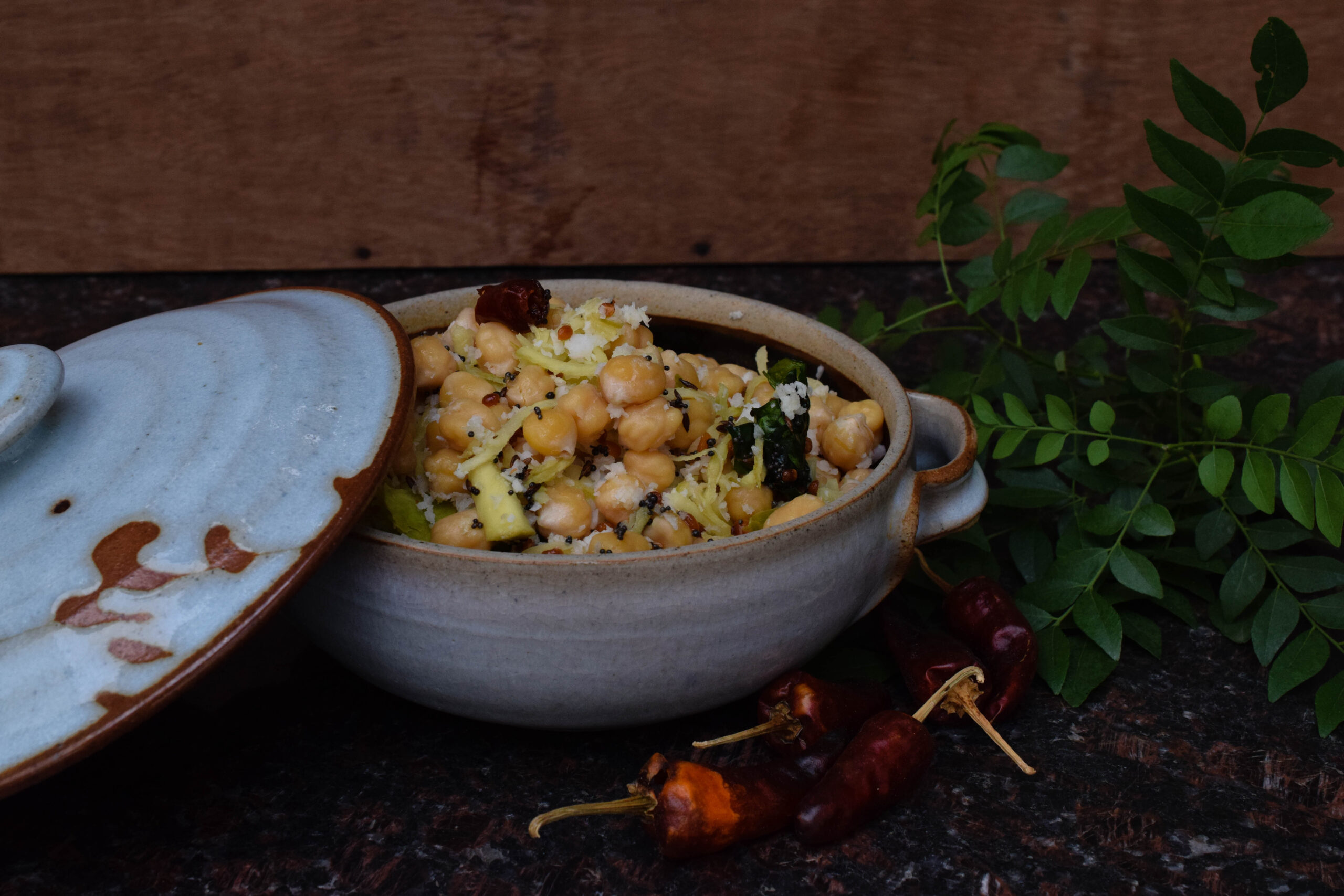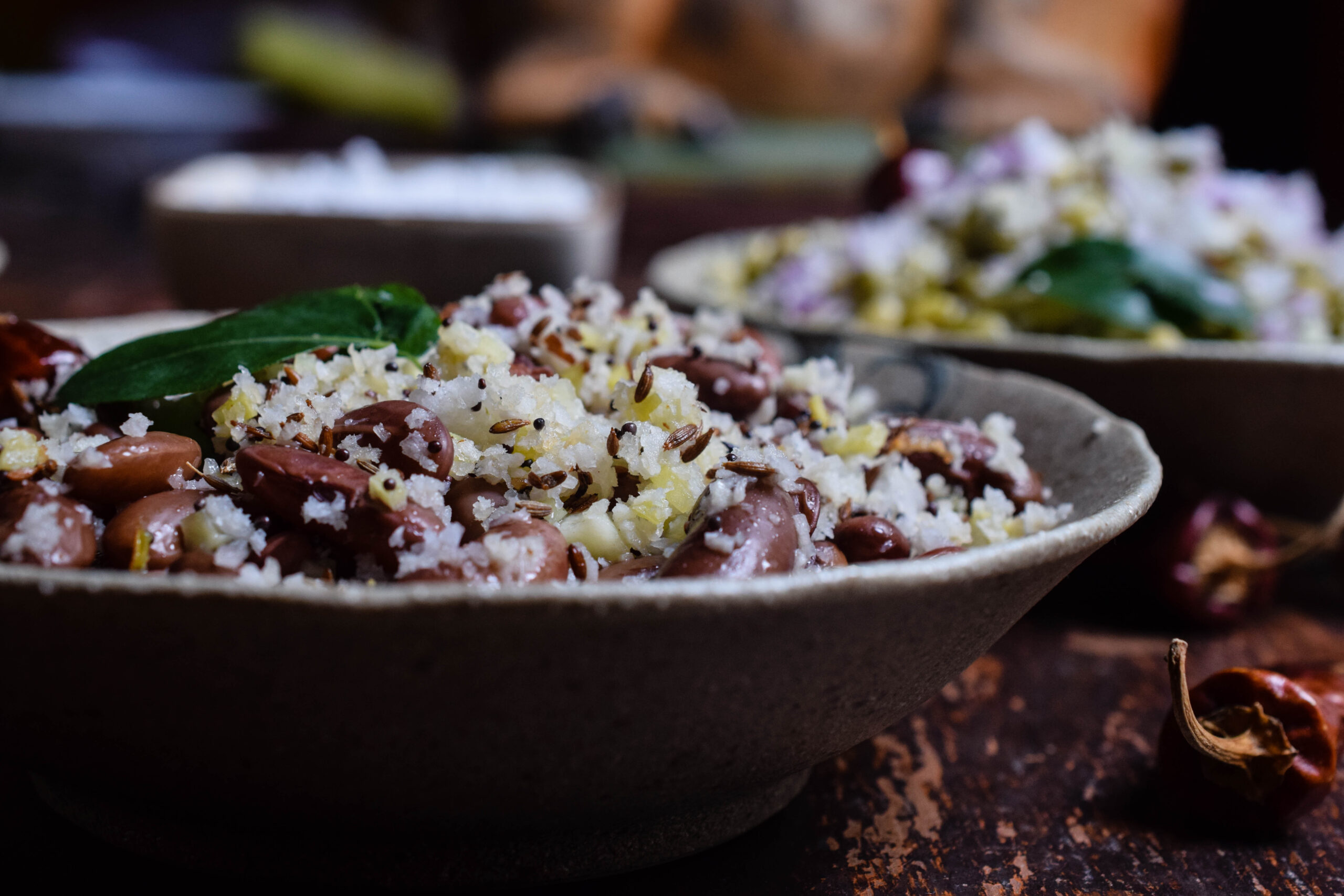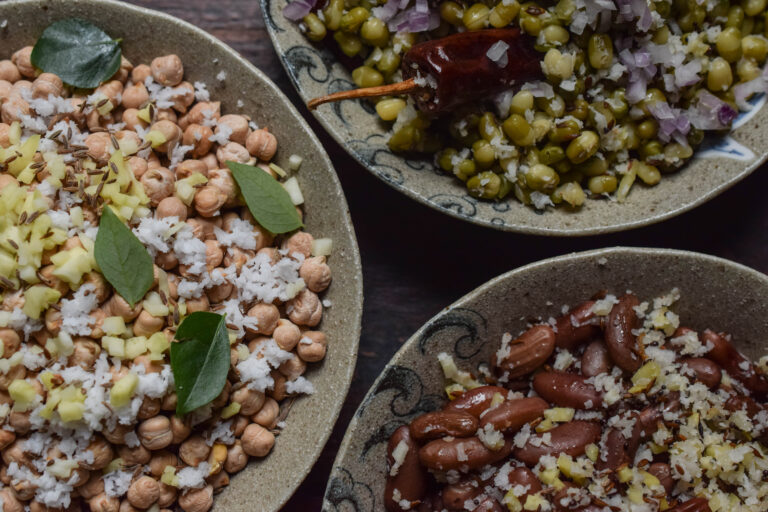What is the most descriptive collective noun for coconuts? A cluster? A clump? A crowd? None of them quite sufficed for the copious numbers I found myself with! With five thriving trees in my garden, dangerously dropping their heavy drupes at any given moment, I responded to this abundance in the best way I know how: by bringing them into my kitchen.
So I hired a nimble man to climb up the trees to cut most of the coconuts down, and then we segregated them into tender ones, which yielded nutritious coconut water, and ripe ones with flesh that could be shaved. One of my coconut trees is also the site of an experiment of mine. I have a little basket on a lovely pulley system which takes pieces of papaya up to a nice altitude for the parrots that often flit about. It took a while to convince them that this odd contraption was actually a friendly gesture, but as with people and animals both – at the end of the day, appetite always wins!

The shaved coconuts found themselves in many of my recipes: from coconut rose cupcakes (which you can order here if you’re in Chennai) to sweet-savoury kachoris (which you can make in your own kitchen, with my recipe here) and more. And in the late afternoons, those pristine white shavings of coconut were perfect for a local lentil dish: sundal.
In simplest terms, sundal is a kind of salad. It has a special place in the lives of anyone who grew up in Chennai, because this humble and addictive chickpea concoction is the snack of choice on our famous beaches. Served hot from hawker stalls, wrapped in a newspaper cone, it’s the perfect thing to munch on while watching the sunset from the shore. Sundal is also served during the Navaratri festival, and children visiting relatives and family friends are usually asked to sing before being given the snack –I remember singing for my sundal many times as a little girl! These nostalgic associations make it a comfort food – but a surprisingly healthy one that’s a perfect accompaniment at tea-time.

Sundal (South Indian Chickpea Salad)
Ingredients:
1 cup chickpeas
¾ cup finely chopped raw mango (substitute or add: anything crunchy, like capsicum or onions)
½ cup grated coconut
¼ cup finely chopped coriander
salt to taste
optional: ½ cup chopped tomatoes
For tempering:
1 tablespoon sesame/coconut oil
1 teaspoon mustard seeds
1 teaspoon cumin seeds
8-10 curry leaves

The authentic sundal is made of chickpeas, but I have made successful variations with garbanzo beans, edamame, mung beans (green grams), kidney beans (rajma) and so on. There simply needs to be one base lentil, around which you build up flavours.
Soak the chickpeas overnight. Skip this step if you are using tinned garbanzo beans or any lentil that does not require softening. Then, pressure cook the chickpeas. Once again, unless you are using chickpeas, kidney beans or any other harder lentil, this step is also not required. Mung beans can be steamed in water for just ten minutes, for instance. Choose the best method for the lentil in question, and simply ensure that it is cooked until it is soft to the bite.

In a wok, add the oil and let it heat up. Then add the various seeds for tempering. When they begin to splutter, add the curry leaves. At this stage, you may wish to add dried red chillies or chopped green chillies if you desire more spiciness.
Immediately, add the lentils. Stir continuously on a high flame for not more than five minutes. Add salt to taste and switch off the flame.
Now, add the raw mango, coconut (and optionally, the tomatoes). If you have replaced the mango with another crunchy ingredient, you may wish you add a squeeze of lime for tanginess.
The softness of the chickpea or primary lentil must be offset by something crunchy. Raw mango is the traditional ingredient, but this can just as well be replaced by onions, capsicum and so on. In summers, cut cucumbers will have a cooling effect. You can add any or all of the above, depending on your taste. Either way, the texture of the sundal will be well-balanced between something crisp and something mushy.
Simply mix the ingredients well on the lingering heat of the wok, and the sundal is ready to be served. Whether you want to serve it in pretty bowls or Marina Beach-style newspaper cones is up to you!
I hope you’ll enjoy this light, vegan, gluten-free delight from my hometown – I’d love to hear from you in the comments about what you think of it!




